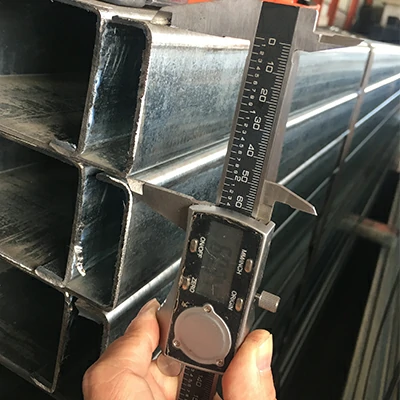C channels, also known as C-sections or C-beams, are structural components commonly used to support and protect various building elements, including steel pipes. While C channels themselves do not provide direct protection against harsh weather conditions, their use in conjunction with other components can contribute to the overall durability and resilience of steel pipes in adverse weather.
Here are ways in which C channels may play a role in protecting steel pipes:
- Structural Support:
- C channels are often used as structural supports for steel pipes, providing a stable framework. Properly installed C channels help distribute the load of the pipes, preventing sagging or deformation. This structural support is crucial in maintaining the integrity of the pipes, especially in conditions with heavy winds or other environmental stressors.
- Elevated Installation:
- Elevating steel pipes using C channels can help protect them from direct contact with the ground. This elevation prevents potential damage from ground moisture, flooding, or soil corrosion. Elevated installation also facilitates easier inspection and maintenance of the pipes.
- Protection from Physical Damage:
- C channels can act as protective barriers, helping shield steel pipes from physical damage caused by external factors such as impact, China C channel manufacturers falling debris, or accidental contact. This is particularly important in areas with extreme weather events that may result in debris or other hazards.
- Corrosion Prevention:
- If the C channels are coated or treated with corrosion-resistant materials, they can contribute to protecting steel pipes from corrosion. Corrosion-resistant coatings on C channels help create a barrier between the pipes and corrosive environmental elements, extending the lifespan of the pipes.
- Secure Fastening:
- Properly securing steel pipes within C channels using appropriate fastening methods can prevent movement and vibration. Securely fastened pipes are less susceptible to damage caused by wind-induced vibrations or dynamic loads, enhancing their resilience in harsh weather conditions.
- Design for Wind Loads:
- C channels can be designed to withstand wind loads effectively. In areas prone to strong winds or storms, the structural design of C channels supporting steel pipes can take into account wind resistance, ensuring that the overall system remains stable and secure.
- Thermal Insulation:
- In some cases, C channels may be used in conjunction with thermal insulation materials to protect steel pipes from temperature variations. Insulating materials can help prevent the formation of condensation, reducing the risk of corrosion caused by moisture.
- Guidance and Alignment:
- C channels can be used to guide and align steel pipes, ensuring that they remain in the intended position and alignment. Proper alignment is crucial for the overall stability and performance of the pipes, especially in areas with extreme weather conditions.
It’s important to note that while C channels can provide support and protection for steel pipes, comprehensive protection strategies may involve additional measures such as coatings, insulation, and proper maintenance practices. The specific design and installation considerations will depend on the environmental conditions of the site and the intended use of the steel pipes. Engineers and designers often take a holistic approach to ensure the longevity and resilience of steel pipe systems in challenging weather conditions.
